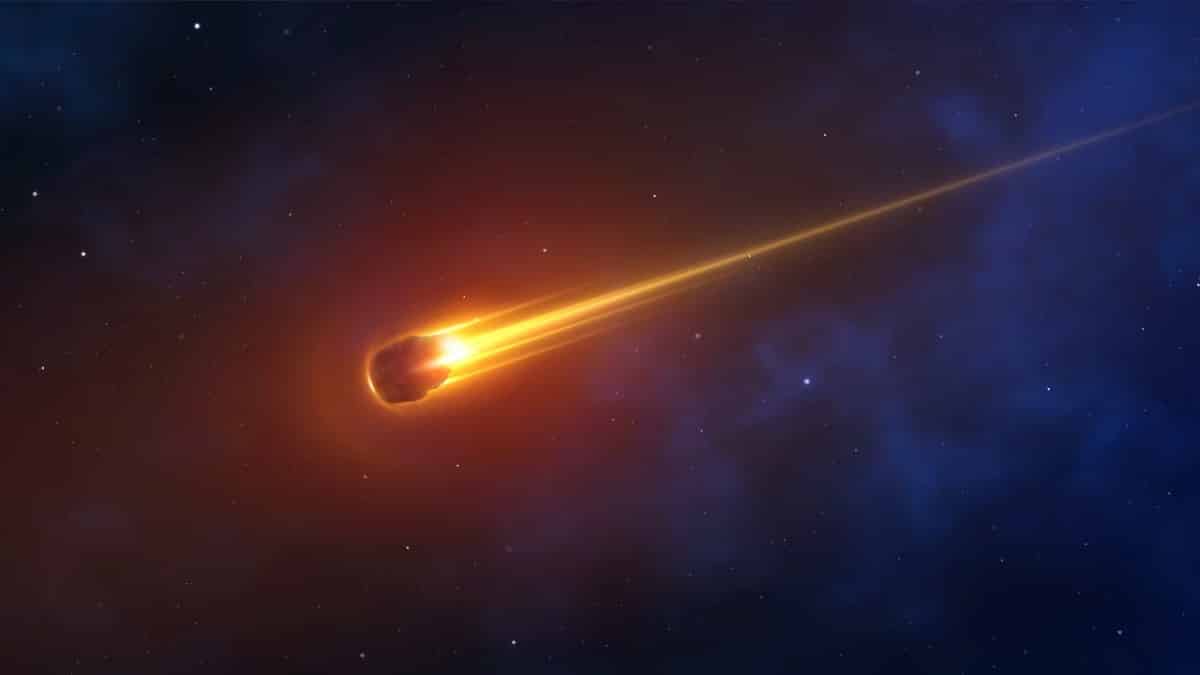Almost every new observation of the interstellar object 3I/Atlas reveals something unexpected. Some astronomers say that’s only natural for a visitor from beyond our Solar System — only two such objects have ever been studied. But others believe there’s more to the story. Harvard astrophysicist Avi Loeb, known for his controversial theories, has a bold hypothesis: 3I/Atlas might not be a comet at all, but an alien spacecraft.
A comet full of surprises
Since its discovery this summer, 3I/Atlas has been one mystery after another. Astronomers quickly confirmed it came from interstellar space, and since then, it’s behaved in ways that defy expectations.
Now, as it nears its closest approach to the Sun on October 29, new observations have reignited debate. Using the Keck Cosmic Web Imager in Hawaii, scientists detected a strong signature of nickel in the comet’s outflow — but curiously, no sign of iron. That’s something never seen before in any comet.
Comet #3I/ATLAS is only the third interstellar object we’ve ever spotted ☄️
Discovered in July, the comet is making its way through our Solar System, carrying onboard clues about the formation of worlds far beyond our own.
Follow its journey & what we learn about it 👉… pic.twitter.com/osAhW5OObn
— ESA Science (@esascience) September 9, 2025
The curious case of nickel tetracarbonyl
Researchers also found traces of nickel tetracarbonyl, a compound that immediately drew Loeb’s attention. On Earth, this substance doesn’t occur naturally — it’s an industrial byproduct used primarily in aerospace manufacturing. Loeb wasted no time hinting at the implications, telling his followers to “take your vacations before October 29.”
Strange as it sounds, most astronomers aren’t jumping to alien conclusions. They say a natural process could explain the compound’s presence — perhaps forming near the comet’s nucleus, where nickel levels are unusually high.
First images of comet #3I/ATLAS from Europe’s Mars orbiters 😍
Observing the comet from 30 million km away, #ExoMars reveals the halo of gas and dust surrounding the comet’s nucleus.
Read more 👉 https://t.co/LYT2kHpwa7 pic.twitter.com/viXx3IyddB
— ESA Science (@esascience) October 7, 2025
A jet that turned heads
Another curious observation came from Spain’s Two-Meter Twin Telescope (TTT), which spotted 3I/Atlas ejecting a massive jet of gas and dust toward the Sun. The spectacle led some to speculate about “engine exhaust,” but experts quickly pointed out that it’s actually a fairly normal feature for comets.
When comets heat up, they vent gas and dust through geyser-like jets. As the comet spins, those plumes widen, sometimes appearing like a tail pointing toward the Sun. In fact, the comet Neowise displayed similar behavior. In the case of 3I/Atlas, the jet could stretch nearly 10,000 kilometers.
Later observations from the Nordic Optical Telescope in the Canary Islands showed the comet’s tail had swung in the opposite direction — fueling even more speculation online. For Loeb, this was “exactly what you’d expect from an alien craft slowing down near the Sun.” For everyone else, it’s likely just physics: large dust grains move slowly, taking time to react to solar radiation pressure, which can change the apparent direction of a comet’s tail.
NASA is assessing the possibility of using the Europa Clipper spacecraft, originally designed to study Jupiter’s moon Europa, to intercept the interstellar comet 3I/ATLAS when it approaches the Sun between late October and early November 2025.
During that period, the comet will… pic.twitter.com/Jwd9hLrW7o
— Erika (@ExploreCosmos_) October 23, 2025
The investigation continues
NASA has since added 3I/Atlas to its International Asteroid Warning Network (IAWN) list — not because anyone suspects alien involvement, but because the object’s unpredictable trajectory poses a unique challenge. Between November 27 and January 27, telescopes worldwide will focus on refining its path.
Meanwhile, NASA’s Europa Clipper mission — currently en route to Jupiter’s icy moon Europa — might soon pass through the comet’s ion tail between October 30 and November 6. Scientists expect it to encounter charged particles blasted off by the solar wind, providing valuable clues about the object’s composition.
Whatever 3I/Atlas turns out to be — an unusual interstellar comet or something truly extraordinary — the world will be watching closely.
![]()
Nathalie Mayer
Journalist
Born in Lorraine on a freezing winter night, storytelling has always inspired me, first through my grandmother’s tales and later Stephen King’s imagination. A physicist turned science communicator, I’ve collaborated with institutions like CEA, Total, Engie, and Futura. Today, I focus on unraveling Earth’s complex environmental and energy challenges, blending science with storytelling to illuminate solutions.

